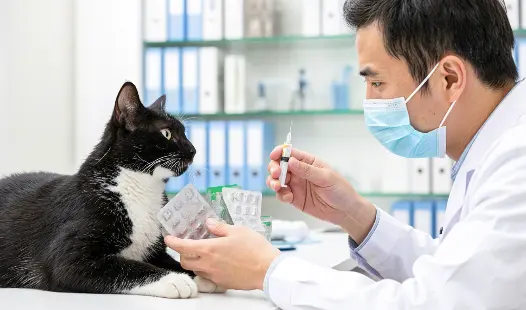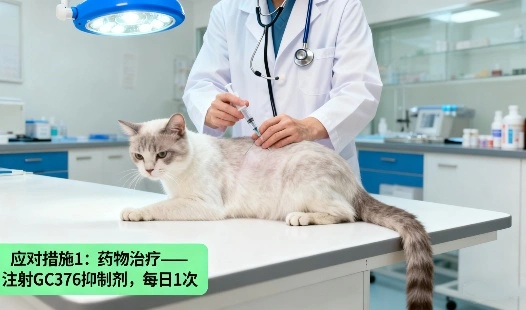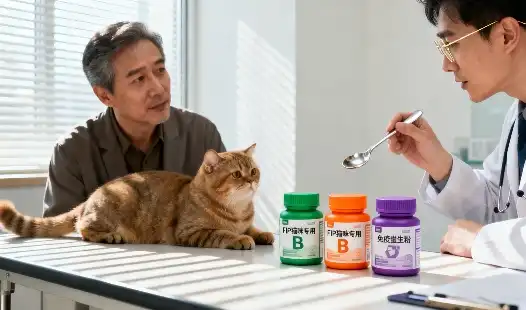There was a time when feline infectious peritonitis (FIP) was considered an untreatable and fatal disease, leaving cat owners and veterinarians with few options. However, the emergence of the antiviral compound GS 441524 FIP has completely changed that outlook, offering real hope for cats diagnosed with this devastating condition. As increasing numbers of pet owners turn to this promising therapy, an important question frequently arises: what is the optimal duration of treatment with GS-441524 to achieve lasting remission? This comprehensive guide explores the recommended treatment periods for different forms of FIP—wet, dry, and neurological—while also addressing key factors that can influence recovery times, such as disease severity, the cat's immune response, and individual tolerance. Additionally, it outlines the importance of ongoing monitoring, regular veterinary evaluations, and adherence to dosing schedules to ensure the most successful treatment outcomes.
Standard Treatment Period for Wet vs Dry FIP
The duration of GS-441524 treatment can vary depending on the form of FIP a cat is experiencing. Let's examine the typical treatment periods for the two main types of FIP:
Wet FIP Treatment Duration
Wet FIP, characterized by fluid accumulation in the chest or abdomen, often responds more quickly to GS 441524 treatment. For cats with wet FIP:
- The standard recommended treatment duration is typically 84 days (12 weeks)
- Some cats may show significant improvement within 4-8 weeks
- Younger cats with wet FIP may potentially be cured in as little as 8 weeks
Dry FIP Treatment Duration
Dry FIP, which affects various organs without fluid accumulation, may require a longer treatment period:
- The recommended treatment duration for dry FIP is generally 84-112 days (12-16 weeks)
- Some cases may require treatment for up to 6 months
- The exact duration depends on the cat's response and the severity of organ involvement
Extended Therapy Protocols for Neurological FIP
Neurological FIP, which affects the brain and/or spinal cord, presents unique challenges and often requires extended treatment protocols.
Longer Treatment Duration
Cats with neurological FIP typically need:
- A minimum treatment duration of 12 weeks (84 days)
- Many cases require 16-24 weeks (112-168 days) of treatment
- Some cats may need therapy for up to 8-12 months in severe cases
Higher Dosage Requirements
Neurological FIP often necessitates:
- Starting doses of 10-15 mg/kg/day of GS 441524
- Potential dose increases up to 20-25 mg/kg/day in resistant cases
- Close monitoring for side effects at higher doses
Monitoring Progress Throughout Treatment
Regular monitoring is crucial to determine the optimal duration of GS-441524 treatment and assess your cat's response.
Clinical Signs and Behavior
Observe your cat for improvements in:
- Activity levels and playfulness
- Appetite and weight gain
- Resolution of specific FIP symptoms (e.g., fever, jaundice, neurological signs)
Laboratory Testing
Periodic blood tests are essential to track progress:
- Complete blood count (CBC) to assess anemia and inflammation
- Serum chemistry panel to evaluate organ function and protein levels
- Tests should be performed every 2-4 weeks during treatment
Adjusting Treatment Duration
Your veterinarian may recommend extending or shortening treatment based on:
- Rate of clinical improvement: If your cat shows rapid and consistent improvement—such as increased energy, appetite, and weight gain—your veterinarian may consider shortening the treatment period. However, treatment should never be stopped abruptly, as premature discontinuation could lead to relapse or incomplete viral suppression.
- Normalization of blood values: Blood parameters, including white blood cell count, globulin levels, and liver enzyme activity, play a crucial role in assessing recovery. When these values return to normal and remain stable over time, your veterinarian may evaluate whether the treatment duration can be safely adjusted without risking recurrence.
- Presence of residual symptoms or complications: In cases where neurological or ocular symptoms persist, your veterinarian may recommend extending the treatment duration. Continuing GS-441524 therapy for a longer period helps ensure that all remaining viral activity is eliminated, reducing the likelihood of relapse or long-term complications.
The recommended duration of GS-441524 treatment for FIP can vary significantly depending on the form of FIP, individual cat response, and potential complications. While the standard treatment period is often 12 weeks, some cats may require shorter or longer courses of therapy. It is also important for cat owners to consider the GS-441524 price, as treatment duration can influence overall cost and financial planning. Regular monitoring and close collaboration with your veterinarian are essential to determine the optimal treatment duration and ensure the best possible outcome for your feline companion.
It's important to note that while GS-441524 has shown remarkable efficacy in treating FIP, it is still considered an experimental drug in many regions. Always consult with a veterinarian experienced in FIP treatment to determine the most appropriate protocol for your cat.
1. Q: Can GS-441524 treatment be stopped early if my cat seems cured?
A: It's generally not recommended to stop treatment early, even if your cat appears healthy. Premature discontinuation can lead to relapse. Always complete the full course as prescribed by your veterinarian.
2. Q: What happens if GS-441524 treatment needs to be extended beyond the standard duration?
A: In some cases, treatment may need to be extended if the cat hasn't fully recovered. Your veterinarian will closely monitor your cat's progress and adjust the treatment plan accordingly.
3. Q: Are there any long-term side effects of prolonged GS-441524 treatment?
A: While GS-441524 is generally well-tolerated, long-term studies are still ongoing. Your veterinarian will monitor for potential side effects and weigh the benefits against any risks of extended treatment.
Partner with BLOOM TECH for High-Quality GS-441524 Supply
When it comes to treating FIP, BLOOM TECH knows how important it is to have a steady supply of high-quality GS-441524. To guarantee the highest possible standards of purity and effectiveness, we use stringent quality control procedures throughout the production of our pharmaceutical-grade GS-441524 powder. Helping vets and cat owners in their battle against FIP is our first priority, and we want to do so with our dependable supply chain and affordable GS-441524 price.
Experience the BLOOM TECH difference:
- Consistent high-quality GS-441524 powder
- Competitive pricing and flexible ordering options
- Rapid shipping and responsive customer support
- Comprehensive product documentation and technical assistance
Ready to secure a reliable GS-441524 supplier for your practice or patients? Contact our dedicated sales team today at Sales@bloomtechz.com to discuss your needs and learn more about our products. Trust BLOOM TECH as your partner in the battle against FIP.
1. Pedersen, N.C., et al. (2019). Efficacy and safety of the nucleoside analog GS-441524 for treatment of cats with naturally occurring feline infectious peritonitis. Journal of Feline Medicine and Surgery, 21(4), 271-281.
2. Addie, D.D., et al. (2020). Feline infectious peritonitis. ABCD guidelines on prevention and management. Journal of Feline Medicine and Surgery, 22(11), 1047-1068.
3. Murphy, B.G., et al. (2020). The nucleoside analog GS-441524 strongly inhibits feline infectious peritonitis (FIP) virus in tissue culture and experimental cat infection studies. Veterinary Microbiology, 219, 108451.
4. Dickinson, P.J., et al. (2020). Antiviral treatment using the adenosine nucleoside analogue GS-441524 in cats with clinically diagnosed neurological feline infectious peritonitis. Journal of Veterinary Internal Medicine, 34(4), 1587-1593.















_副本_1758779278502.webp)


